Matador Network's Blog, page 178
April 22, 2024
Delta Airlines Will Send Your Bags to Your Final Destination Without Rechecking For Certain International Connections

Travelers heading home from a trip to Japan this year may have a few extra minutes to spend in the airport lounge. A forthcoming policy change from Delta Airlines is set to make traveling to the United States from Japan, and eventually other destinations across Asia and Europe, much easier for some passengers. The rule change would permit international travelers coming from Japan and landing at an international airport in the United States before connecting to an additional US destination to skip the process of bringing their checked luggage through customs during their layover.
As airline policy currently stands, internationally connecting passengers must collect their luggage upon landing in the United States, proceed through customs, and then re-check the bag with the airline before heading to the gate for their connecting flight. The policy update would allow passengers to skip the process of claiming and then re-checking their bags. The bags will instead be put through scanners by airline and customs staff behind the scenes.
The new process will first take effect on Delta flights from Tokyo’s Haneda Airport to airports in the United States. After testing the policy on flights from Tokyo Haneda, Delta plans to enact it on flights coming from Seoul’s Incheon International Airport, Frankfurt International Airport in Germany, and London Heathrow. By the end of the year, this policy could be commonplace for passengers flying internationally on Delta.
“Anyone who has traveled and connected in the United States knows that it’s a difficult experience,” said Delta’s Vice President for the Asia-Pacific Region, Jeff Moomaw, in Japanese newspaper The Mainichi. “We will soon be able to remove that part of the experience.”
There is one caveat to the new policy, however. Passengers connecting in the United States to an additional international flight will still need to collect their bags and pass them through customs. But the policy for passengers traveling from airports where this rule will be in effect and then ending their route in the US should make Delta a preferred airline as it will save time and stress when reintegrating to the US from abroad.
Time will tell if this policy becomes standard practice at other major international carriers. Given that most followed suit with recent hikes in checked bag fees as well as changes that made it harder to earn and keep top-tier reward status, Matador expects announcements from other airlines following Delta’s trial on flights from Tokyo. 
This Is How Early You Should Purchase an International Flight if You Want the Best Price

When it comes to booking anything travel related, the earlier, the better, whether that is for peace of mind, availability, or price. But how early exactly do you have to book your international flights to get the best deal possible? CheapAir.com’s 2024 International Airfare Study looked at 917 million airfares across the world to determined how many days in advance American travelers should be booking flights in 2024.

Infographic: CheapAir.com
While flying to Europe, Africa, the Middle East, and the South Pacific requires a lot of advance planning, taking a last-minute trip to the Caribbean, South America, Central America, Mexico, Asia, and Canada is a lot more affordable, although you still need to get your ducks in a row at least one month in advance.
The best time to book an international flight changes every year and depends on a variety of factors including big events in certain geographical region. For example, in 2023, the best time to book a flight to Europe was only 45 days in advance but with the Summer Olympic Games taking place in Paris this summer, the lowest airfare for the region is now to be found 320 days early. The trend is reversed if you want to travel to the Caribbean this year; in 2024, you’ll find the best price only 29 days in advance, while in 2023 you needed to book your flight 56 days early. With the 2026 Winter Olympic Games taking place in February in Milan-Cortina d’Ampezzo in Italy, you should start planning early for your next European travels.
The study has also yielded CheapAir.com with some interesting data about the best days of the week for Americans to book cheap international flights (Tuesdays and Wednesdays), the best month (February), and the worst one (July). With February well behind us, you may have to do some digging to find good deals on airfare.
CheapAir.com has also looked at the best time for Americans to book domestic airfare in 2024 and found that the best time to purchase domestic travel tickets is 42 days before departure. 
5 Lightweight Backpacking and Camping Tents Our Gear Editors Prefer

Heading into the wilderness is always more enjoyable when you know you’ll sleep comfortably. Having a lightweight backpacking tent is essential, as tents not only take up a good amount of space in your pack but many standard options also weigh five pounds or more. However, it’s possible to cut that weight at least in half, and if you’re backpacking with a partner or friend, you can do so while still only carrying one tent. That’s why most of these lightweight backpacking tent options are two- or three-person tents – as Matador’s outdoor and gear editors have learned, few things cut down pack weight like doubling an item’s productivity.
Building your outdoor gear setup? Check out Matador’s guides to everything you need to thrive outside: The perfect backpack for every type of traveler, from hostelers to hikers 10 must-haves for the traveling yogi What to pack for an epic trekking adventure in Latin America All the fall camping gear you need to have an epic trip All the outdoor gear you need to keep moving on the trail this spring
We hope you love the lightweight backpacking tent options we recommend! Just so you know, Matador may collect a small commission from the links on this page if you decide to make a purchase.
Big Agnes Copper Spur HV UL2 Photo: REI
Photo: REI Photo: REI
Photo: REIThe three-season Big Agnes Copper Spur HV UL2 tent isn’t your average squeeze-box shelter. Think spacious living room with a view (of pine trees, most likely), thanks to the high volume hub design. Two doors mean no more awkward partner acrobatics, and the DAC Featherlite NSL poles ensure you’ll be stargazing, not swearing at tangled poles, come nightfall. Water-resistant materials and a bathtub floor mean you’ll stay dry even when Mother Nature throws a tantrum.
Now, for the not-so-rosy bits. The zippers can be a bit finicky, and the price tag might sting a bit. Plus, the tapered foot end isn’t ideal for tall folks who dream of sleeping spread-eagle. But hey, all things considered, the Copper Spur HV UL2 is a solid option for weight-conscious backpackers who value a little comfort under the stars.
Big Agnes Copper Spur HV UL2 specs:
Capacity: 2 personWeight: around 2 lbs 12 oz (1.2 kg)Packed size: 20 x 6 inches (51 x 15 cm)Floor area: 26 square feet (2.4 m²)Stakes: DAC Featherlite NSL polesFly and floor: Silicone-treated proprietary ultralight double ripstop mixed denier nylon with 1200mm waterproof polyurethane coatingTent body: Breathable proprietary ultralight double ripstop mixed denier nylon featuring a solution-dyed ripstop grid and polyester meshDoors: 2 with awning-style vestibulesPrice: $529.95
Nemo Hornet Elite Osmo 2P Photo: REI
Photo: REI Photo: REI
Photo: REIThe Nemo Hornet OSMO Ultralight 2P Tent prioritizes a balance between weight, livability, and comfort for backpackers. This freestanding, three-season tent offers a surprising amount of interior space for two people, thanks to its near-freestanding design that maximizes headroom and usable area compared to trekking pole tents.
The Nemo Hornet OSMO boasts features that enhance livability without sacrificing significantly on weight. Dual doors and vestibules provide convenient gear storage and access, while the innovative Nightlight Pocket allows tent illumination without a headlamp. A Divvy Cube stuff sack simplifies packing and organization.
It’s important to note that the Nemo Hornet OSMO’s freestanding design and additional features contribute to a slightly higher weight (around 2 lbs 8 oz) compared to some ultralight backpacking tents. Additionally, the price point may be less attractive for budget-conscious backpackers.
Nemo Hornet Elite Osmo 2P specs:
Capacity: 2 personWeight: 2 lbs 1 oz (0.9 kg)Packed size: Not specified by Nemo, but likely similar to the standard Hornet Osmo at around 18″ x 6″ (46 x 15 cm)Floor area: 28 square feet (2.6 m²)Stakes: DAC Featherlite® NFL polesFly and floor: OSMO poly-nylon ripstop fabric with 4x longer-lasting water repellency and 3x less stretch compared to previous Hornet models. Fabric is 100% recycled, PFC-free, and meets flame retardancy standards without added chemicals.Tent body: Breathable 100% recycled polyester mesh with no-see-um netting on doorsDoors: 2 with generous vestibules and Gatekeeper door tie-backsSpecial features: Patent-pending Flybar
poly-nylon ripstop fabric with 4x longer-lasting water repellency and 3x less stretch compared to previous Hornet models. Fabric is 100% recycled, PFC-free, and meets flame retardancy standards without added chemicals.Tent body: Breathable 100% recycled polyester mesh with no-see-um netting on doorsDoors: 2 with generous vestibules and Gatekeeper door tie-backsSpecial features: Patent-pending Flybar volumizing pole clip for extra headroom and even fly tension, Nightlight Pockets for diffused tent illumination, Triangulated corner guyouts for increased usable space and condensation protection
volumizing pole clip for extra headroom and even fly tension, Nightlight Pockets for diffused tent illumination, Triangulated corner guyouts for increased usable space and condensation protectionPrice: $429.95
Sea to Summit Telos TR2 Photo: REI
Photo: REI Photo: REI
Photo: REIThe Sea to Summit Telos TR2 offers a compelling blend of livability, weight, and versatility for backpackers prioritizing a well-rounded shelter. This 2-person, 3-season tent utilizes a unique Tension Ridge design that creates a surprisingly spacious interior with ample headroom. This design also allows the Telos TR2 to be configured as a single-wall tarp or a shade canopy, making it adaptable to various weather conditions and camping styles.
The Telos TR2 falls within the ultralight backpacking range at around 3 lbs 8 oz. Sea to Summit employs high-quality, water-resistant materials and a bathtub floor for reliable weather protection. Additionally, the color-coded poles and clip system facilitate a quick and user-friendly setup, ideal for tired hikers seeking a streamlined pitching experience. It’s worth noting that while the Telos TR2 offers multi-mode functionality, some backpackers prioritizing strictly single-wall use might prefer a lighter option. The price point might also be a consideration.
Sea to Summit telos TR2 specs:
Capacity: 2 personWeight: 3 lbs 8 oz (1.6 kg)Packed size: 6″ x 19 inches (15 x 48 cm)Floor area: 28 sq ft (2.6 m²)Stakes: DAC NSL poles (color-coded for easy setup)Fly: 15D silicone / polyurethane-coated nylon with 1200mm hydrostatic head ratingFloor: 20D nylon bathtub floor with 2500mm hydrostatic head ratingMesh: Ultra-lightweight 15D polyester mesh for breathabilityDoors: 2 with vestibulesSpecial features: Tension Ridge design for improved headroom and livability, FairShare storage system (tent packs into 3 stuff sacks that convert to gear pockets), Hangout Mode (converts fly into a semi-open shelter with trekking poles)Price: $449
Naturehike Cloud Up 3 Person Lightweight Backpacking Tent
Photo: Amazon
If you want an affordable lightweight backpacking tent, the Naturehike Cloud Up 3 is the route to go. It’s available on Amazon, meaning Prime members also get the bonus of free shipping. The “3-person” label here might be a bit optimistic. While it can technically fit three people, things could get cozy, especially on longer trips. You might be better off considering it a comfortable 2-person tent with some wiggle room for gear, or a snug 3-person option for very close companions (think best friends or thruples who don’t mind sharing a sleeping bag).
However, the Cloud Up 3 Person boasts a few key features that make it a solid choice. First and foremost, it’s lightweight, clocking in at around 4.4 lbs (2.0 kg) – while too much for one person, considering you can squeeze three in here, this tent will actually save you weight vs. three people carrying 1- or 2-person tents. Second, the dome-style design with a double Y-shaped structure and 7001 aluminum poles are quick to setup. The 210T polyester fabric with a PU3000mm waterproof rating and a bathtub floor will keep you protected from moderate rain and ground moisture.
Naturehike Cloud Up 3 Person Lightweight Backpacking Tent specs:
Capacity: 3 person (better suited for 2 people with extra gear storage space or 3 very close companions)Weight: 4.4 lbs (2.0 kg)Packed size: Not specified by Naturehike, but likely around 18″ x 6″ (46 x 15 cm) based on similar tentsFloor area: Not specified by Naturehike, but estimated to be around 30-35 square feet (2.8-3.3 m²) based on similar tentsStakes: 7001 aluminum poles with double Y-shaped structureFly: 210T polyester fabric with PU3000mm waterproof ratingFloor: 210T polyester bathtub floorMesh: Mesh panels on doors for ventilationDoors: 1 door with vestibulePrice: $219
Big Agnes Tiger Wall UL 3 Solution-Dyed Tent Photo: Amazon
Photo: Amazon Photo: Amazon
Photo: AmazonThis 3-person shelter prioritizes shedding weight without sacrificing essential comfort for backpackers who value efficiency. The Big Agnes Tiger Wall UL 3 Solution-Dyed Tent is the best lightweight backpacking tent for serious trekkers that spend multiple nights in the wilderness at at time, and who need efficiency and performance to match up equally.
The Tiger Wall UL 3 is an ultralight champion, tipping the scales at a mere 2 lbs 15 oz. Every gram counts on thru-hikes, and this tent keeps your pack feeling light and nimble. As is the case with other light backpacking tents, three people might find themselves getting cozy, so bring your noise-canceling headphones. A single DAC Featherlite pole makes setting up camp a breeze, so you can focus on enjoying the view instead of wrestling with complicated structures. Solution-dyed nylon ripstop with a 1200mm waterproof rating keeps moderate rain at bay, and the bathtub floor protects you from ground moisture. 
Big Agnes Tiger Wall UL 3 Solution-Dyed Tent specs:
Capacity: 3 personWeight: 2 lbs 13 oz (1.28 kg)Packed size: 13″ x 7″ (33 x 18 cm)Floor area: 38 square feet (3.5 m²)Stakes: DAC Featherlite single-pole designFly and floor: Solution-dyed nylon ripstop with 1200mm PU coatingMesh: Mesh panels for ventilationDoors: 2 doors with storm flap vestibulesPrice: $499.95
More like thisTravelThis $50 Gadget Revolutionized My Camping Gear SetupThese Airbnbs Have Epic Waterslides to Keep Your Crew Refreshed

It’s one thing checking into a vacation home from Airbnb’s “amazing pools” category but another entirely when your swim space comes with a waterslide. Whether you’re traveling with children or looking to appease your inner big kid, there’s no better way to refresh after a day of exploring than by plunging into a sparkling pool. Slide, don’t walk to book these incredible Airbnbs in the US with waterslides you need to see to believe.
Best Florida Airbnb rentals with waterslidesBeautiful California Airbnbs with waterslidesTop Texas Airbnbs with waterslidesCoolest Airbnbs with a waterslide nationwideWe hope you love the Airbnbs with waterslides we recommend! Just so you know, Matador may collect a small commission from the links on this page if you decide to book a stay. Listed prices are accurate as of the time of publication.
Best Florida Airbnb rentals with waterslidesWaterfront – two-story waterslide fun
Matador’s guides to the best of Airbnb Categories:10 Remote, Off-The-Grid Airbnbs Where You Can Get Away From It AllThe 11 Most Beautiful Converted Churches You Can Stay in Around the World on AirbnbAirbnb Just Made Windmills a Category, and These 9 Have Us Planning a TripAirbnb Now Has a Towers Category. These 9 Will Climb Your Bucket ListAirbnb Launched a Tiny Homes Category, and We’re Already Planning Trips Around These 1111 Properties in Airbnb’s New OMG! Category You Won’t Believe Are Real
 Photo: Airbnb
Photo: Airbnb Photo: Airbnb
Photo: Airbnb Photo: Airbnb
Photo: Airbnb Photo: Airbnb
Photo: AirbnbWhy take the stairs when a slide gets you there in half the time? This Santa Rosa Beach, Florida, property links the second story to the pool with the help of a nifty waterslide. While you wait your turn, you can shoot hoops into the aquatic basketball net or whip up a frozen margarita in the tiki bar. Located in a waterfront community, the property has a boat slip with water access as well as a mini private beach. Paddle boards are provided by the host.
Fourteen guests, five bedrooms
Price: $810 per night
 Photo: Airbnb
Photo: Airbnb Photo: Airbnb
Photo: Airbnb Photo: Airbnb
Photo: Airbnb Photo: Airbnb
Photo: AirbnbThis pet-friendly Holmes Beach, Florida, Airbnb with a waterslide is perfect for families. The backyard pool is fully fenced and fringed by palms and tropical flora while the upper floor features a roof terrace. A short and sweet waterslide is built into the landscaping and is ideal for younger kids that are getting started with swimming. Bedrooms and living spaces embody a maritime vibe which is fitting; the closest beach is a mere 400 feet away.
Twelve guests, six bedrooms
Price: $325 per night
 Photo: Airbnb
Photo: Airbnb Photo: Airbnb
Photo: Airbnb Photo: Airbnb
Photo: Airbnb Photo: Airbnb
Photo: AirbnbCreate everlasting memories at this West Palm Beach, Florida, Airbnb rental with a waterslide. The heated outdoor pool is made even better with the addition of a slide that peeps out of the vegetation. Designed in the Key West style, the roomy property fuses comfort and luxury. The kitchen is well-stocked while the master suite comes with a decadent hot tub bath. The hosts are in partnership with local fishing charters and are on hand to organize an outing for the angling enthusiasts in the group.
Fifteen guests, five bedrooms
Price: $430 per night
Luxury villa minutes from Siesta Key Beach
 Photo: Airbnb
Photo: Airbnb Photo: Airbnb
Photo: Airbnb Photo: Airbnb
Photo: Airbnb Photo: Airbnb
Photo: AirbnbSee more photosThis spectacular vacation rental in Siesta Key has five bedrooms and spacious living areas, so even with a large group, you can enjoy privacy during your stay. It’s also seconds from world-famous Siesta Key sands, where you can sunbathe, swim, and enjoy watersports in the Gulf waters. Or you can just hang out in your epic Airbnb and play on the luxurious waterslide.
Fifteen guests, five bedrooms
Price: $1,463 per night
 Photo: Airbnb
Photo: Airbnb Photo: Airbnb
Photo: Airbnb Photo: Airbnb
Photo: Airbnb Photo: Airbnb
Photo: AirbnbSee more photosOne of the better Disney Airbnbs, this listing gives you easy access to all the parks attractions. And after a day at Disney you can continue the fun at the Airbnb’s very own waterslide complex. It features two water slides, a kids splash park, and a walk in pool. Guests also have access to a movie theater, game room, fitness center, putting green, playground, and a snack shop. You can’t really ask for more from a family theme park vacation rental.
Six guests, three bedrooms
Price: $130 per night
 Photo: Airbnb
Photo: Airbnb Photo: Airbnb
Photo: Airbnb Photo: Airbnb
Photo: Airbnb Photo: Airbnb
Photo: AirbnbThere’s no reason to leave the rental when you book this awesome Coachella, California, Airbnb with a waterslide. Complete with a slide, fountains, hot tub, and a lazy river, the swim space is poised for hours of joy under the Californian sun. Meanwhile, younger tots can burn even more energy on the playground and go-kart track and the whole group will find amusement in the retro games room.
Fourteen guests, four bedrooms
Price: $795 per night
 Photo: Airbnb
Photo: Airbnb Photo: Airbnb
Photo: Airbnb Photo: Airbnb
Photo: Airbnb Photo: Airbnb
Photo: AirbnbEscape the bustle of Los Angeles at this Temecula, California, Airbnb vacation home in the heart of wine country. The one-story compound is immaculately put together with sophisticated minimalist interiors and full emphasis on recreation. Starting with the pool, you have fountains, a spa tub, and, of course, the waterslide. Overlooking this, you’ll find a Palapa hut, pizza oven, and al fresco fireplace. Lawn games and a pool table add a final layer of fun.
Twelve guests, five bedrooms
Price: $1,020 per night
 Photo: Airbnb
Photo: Airbnb Photo: Airbnb
Photo: Airbnb Photo: Airbnb
Photo: Airbnb Photo: Airbnb
Photo: AirbnbCool down at this Indio resort-style home in Southern California’s Colorado Desert region. The backyard is rigged with a pool with a waterslide, hot tub, and floating seats. Toddlers and smaller kids will relish the splash pads while guests of all ages can channel their inner LeBron on the private basketball court. Interiors are tastefully styled with attention placed on high-quality linens and upholstery.
Ten guests, four bedrooms
Price: $850 per night
Eight-bedroom desert home in Palm Desert, California
 Photo: Airbnb
Photo: Airbnb Photo: Airbnb
Photo: Airbnb Photo: Airbnb
Photo: Airbnb Photo: Airbnb
Photo: AirbnbSee more photosIn the desirable Cahuilla Hills neighborhood of Palm Desert, this Airbnb offers a luxurious desert living experience, perfect for large groups or families. Aside from the waterslide, the most striking feature of home is its spaciousness. This eight-bedroom, six-bathroom villa can comfortably accommodate up to 18 guests. Large windows throughout the house showcase the surrounding mountain and palm tree views, bringing the desert to your doorstep. The outdoor Flintstones-style pool has a small waterfall and a slide, perfect for a refreshing dip in the summer heat.
Sixteen+ guests, eight bedrooms
Price: $2,236 per night
 Photo: Airbnb
Photo: Airbnb Photo: Airbnb
Photo: Airbnb Photo: Airbnb
Photo: Airbnb Photo: Airbnb
Photo: AirbnbSee more photosThe highlight of this rental is the gorgeous resort-like pool area. You’ll have access to a long 35-foot water slide, perfect for entertaining kids and adults. There’s also a large hot tub that can easily seat eight people, a fire pit, pool floaties, and a grilling area with lounge chairs and an outdoor table. As Murrieta is located in the Temecula Valley wine country, you’ll also have your pick of wineries to visit during your stay. The house itself has recently been updated. Sleeping arrangements might be a juggle if you bring the maximum number of guests. However, the third bedroom has three beds, so if you’re traveling with a tight knit group, there shouldn’t be an issue. There is also a couch downstairs that can sleep two.
Nine guests, three bedrooms
Price: $823 per night
 Photo: Airbnb
Photo: Airbnb Photo: Airbnb
Photo: Airbnb Photo: Airbnb
Photo: Airbnb Photo: Airbnb
Photo: AirbnbSee more photosThis is one of the hottest Coachella and Stagecoach rentals. It sits around 1,300 feet away from the festival grounds. The private Californian ranch estate is impressive. Sprawling across a vast five acres of meticulously maintained land, the outdoor facilities are outstanding. You can challenge your group to a game of pickleball, chill in the heated pool with a waterslide or the Jacuzzi, play basketball, or a round of golf on the putting green. As the sun goes down, kick back at the outdoor bar and grilling area or hit the games room for a game or two of air hockey, ping pong, or poker.
Sixteen+ guests, ten bedrooms
Price: $1,788 per night
 Photo: Airbnb
Photo: Airbnb Photo: Airbnb
Photo: Airbnb Photo: Airbnb
Photo: Airbnb Photo: Airbnb
Photo: AirbnbSee more photosAnother excellent option for a large group who loves spending time outdoors, this fully remodeled vacation rental has a bunch of fun amenities. There’s a waterslide, a firepit, a mini golf course, a giant Connect Four, shuffleboard, and a pool table. There are six bedrooms in total, offering a variety of sleeping arrangements including, king beds, queen beds, double beds, a bunk bed, and for the unlucky in the group, a futon. If you want a more elevated experience, there are additional add-ons, such as pet fees, chef services, event decorations, and even daily dishwashing and kitchen cleanup.
Sixteen+ guests, six bedrooms
Price: $396 per night
 Photo: Airbnb
Photo: Airbnb Photo: Airbnb
Photo: Airbnb Photo: Airbnb
Photo: Airbnb Photo: Airbnb
Photo: AirbnbSee more photosThis Airbnb, called “Retreat Oak Leaf,” is a massive vacation rental located in Oak Leaf, Texas, just 20 minutes south of Dallas. The property offers 20 private acres packed with fun activities and amenities to keep you entertained throughout your stay. The farmhouse has six bedrooms and four bathrooms, an open-planned kitchen, a media room perfect for movie nights, and a balcony overlooking the property’s pool and pavilion. However, the 100-foot water slide and a mini slide steal the show. Both lead into a man-made pond, where you can even go kayaking.
Sixteen+ guests, six bedrooms
Price: $1,177 per night
 Photo: Airbnb
Photo: Airbnb Photo: Airbnb
Photo: Airbnb Photo: Airbnb
Photo: Airbnb Photo: Airbnb
Photo: AirbnbSee more photosWith a massive heated private tropical pool with a waterslide, a hot tub, and a swim-in grotto, this has to be one of the more extravagant and imaginative pool set-ups on Airbnb. This villa has plenty of space for a large group, with four bedrooms and a well-equipped kitchen and outdoor grilling area, perfect for poolside barbecues. It’s within a private golf community in Conroe, ten minutes from Woodlands Mall, where you’ll find restaurants and shops.
Sixteen+ guests, four bedrooms
Price: $461 per night
 Photo: Airbnb
Photo: Airbnb Photo: Airbnb
Photo: Airbnb Photo: Airbnb
Photo: Airbnb Photo: Airbnb
Photo: AirbnbSee more photosPort Aransas is one of the coolest small towns in Texas. When you arrive here, you’re officially on island time, so getting an Airbnb with resort facilities is a must. This rental is close to the beach, so you can spend your days soaking up the Texas sun before returning to your resort-style pool with a fun water slide. Guests also have access to the professional host, Silver Sands, concierge services that can assist you with planning your activities.
Eight guests, two bedrooms
Price: $216 per night
 Photo: Airbnb
Photo: Airbnb Photo: Airbnb
Photo: Airbnb Photo: Airbnb
Photo: Airbnb Photo: Airbnb
Photo: Airbnb Photo: Airbnb
Photo: AirbnbSurely one of the most extravagant Airbnbs with a waterslide, this Las Vegas, Nevada, mansion is laid out like a tiny resort. The two swimming pools are designed with waterslides, waterfalls, caves, and 30-foot-high water jets. Meanwhile, a swim-up bar makes it easier to stay on top of those all-important hydration levels. Harmonious bedrooms and multiple en suite bathrooms with Jacuzzi bathtubs are perfect for winding down.
Sixteen guests, seven bedrooms
Price: $2,400 per night
 Photo: Airbnb
Photo: Airbnb Photo: Airbnb
Photo: Airbnb Photo: Airbnb
Photo: Airbnb Photo: Airbnb
Photo: AirbnbFollow in the footsteps of Justin Beiber with a getaway to this luxurious Nīnole vacation complex on Hawaii Island’s Hamakua Coast. Perched on the cliffs, the property experiences breathtaking sunrises and sunsets. The 25-meter Olympic swimming pool is fashioned with a diving platform and a two-story waterslide. Elsewhere, you’ll have access to a nine-tee golf course, tennis court, basketball court, and fitness suite. The hosts are available to arrange grocery shopping, private chefs, yoga classes, and beyond.
Sixteen guests, six bedrooms
Price: $3,555 per night
 Photo: Airbnb
Photo: Airbnb Photo: Airbnb
Photo: Airbnb Photo: Airbnb
Photo: Airbnb Photo: Airbnb
Photo: AirbnbThis one-of-a-kind Scottsdale, Arizona, Airbnb with resort pool and waterslide revolves around a lazy river with a waterfall. Other epic amenities that make this property stand out include the driving range, basketball court, yard games, and indoor games room. Bedrooms and communal areas are relatively humble in comparison with an emphasis on comfort and the sense of space.
Sixteen guests, seven bedrooms
Price: $1,325 per night
Resort-style luxury home thirty minutes from Phoenix
 Photo: Airbnb
Photo: Airbnb Photo: Airbnb
Photo: Airbnb Photo: Airbnb
Photo: Airbnb Photo: Airbnb
Photo: AirbnbSee more photosLocated in Peoria, northwest of Phoenix, this family-fun home is called “The Winding Waterslide Estate,” so expect a truckload of water activities. The most outstanding feature of this property is, of course, the waterslide, but there’s also a swim-up bar, ideal for poolside lounging and cocktails, a sports court for a friendly game of basketball, and a pro putting green. The modern home is split into two houses with six bedrooms and four bathrooms – ample room for a large group.

Sixteen+ guests, six bedrooms
Price: $980 per night
Steveston Village Comes Alive in Spring. Here’s How to Enjoy It on a Trip to Richmond, BC.

A 20-minute drive from Vancouver International Airport, Steveston is a historic fishing village at the southwestern tip of Richmond whose maritime heritage, natural landscapes, and exciting culinary scene invite visitors to explore. Dating back to the 1880s, the waterfront destination was once known as one of Canada’s most prolific salmon canning centers. Today’s Steveston remains a busy commercial fishing harbor while its well-preserved 20th-century buildings and wooden boardwalks along the Fraser River serve as magnets for the tourism and film industries.
With opportunities to immerse yourself in local events, bask in the coastal atmosphere, and savor some of the freshest seafood you’ll ever eat, spring is the ideal time to visit Steveston.
Get the inside scoop on Richmond’s great outdoors.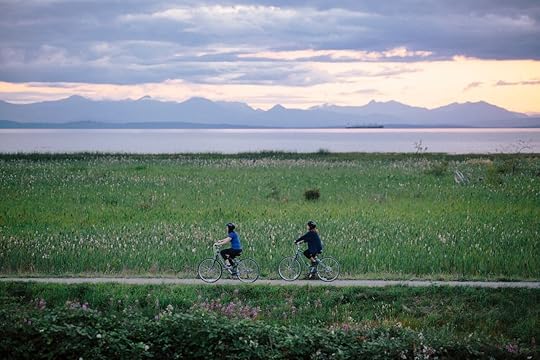
Photo: Tourism Richmond
As warmer weather and longer days arrive, Richmond comes to life with blooming flowers and greenery that make spring the perfect season for time spent outside. And Steveston’s location on the southwest corner of the island, bordered by water and greenspaces, provides easy access to it all.
Start any spring day on the 3.7-mile West Dyke Trail for a dose of fresh air, activity, and vistas spanning from the surrounding marshlands to the Gulf Islands and mountains farther afield. As you stroll or pedal the flat gravel path, stop at the many benches along the trail to soak in the scenery. If you’re looking for bike rentals, Village Bikes in the heart of Steveston has you covered.
The West Dyke Trail is also popular among birdwatchers, especially in the spring when some 1.4 million birds return to British Columbia via the Pacific Flyway. If you’re new to birdwatching and not sure where to start, join a guided tour with expert birder Liron Gertsman. With over 15 years of experience in the area, Gertsman will teach you the ropes and ensure you have a good time.
Hop on a Zodiac boat for a three- to five-hour adventure through the photogenic Gulf and San Juan Islands. You may spot gray and humpback whales, as well as other marine wildlife such as porpoises, orcas, seals, and sea lions. Richmond’s whale-watching season kicks off in April and continues through October, making spring an excellent time to join a tour with Steveston Seabreeze Adventures or Vancouver Whale Watch.
To make like a local, take a stroll down the Steveston Harbour Boardwalk while enjoying a cup of coffee or frozen yogurt. Combining waterfront views with rich maritime history, the boardwalk stretches from the heart of the village to the Britannia Shipyards National Historic Site, where you’ll find souvenir shops, cozy cafes, and seafood restaurants, in addition to a fascinating history lesson. Explore the site’s collection of well-preserved boatyards, bunkhouses, and residences dating back to the mid-1800s. Other recommended stops along the harbor include the Gulf of Georgia Cannery National Historic Site, once the largest salmon cannery in British Columbia, and Imperial Landing Waterfront Park, where anglers cast their lines from the floating dock.
Celebrate spring’s bounty in Steveston.
Photo: Tourism Richmond
From cherry blossom festivals to farmers markets, there’s no shortage of opportunities to take advantage spring’s abundance, not to mention Richmond’s cultural diversity, in and around Steveston.
With large grassy fields, log-strewn beaches, and a Japanese garden honoring the first Japanese immigrant to arrive in the area in the late 1800s, the 75-acre Garry Point Park opens to broad views of the Fraser River and the distant Gulf Islands. It’s a popular spot for picnics and kiting, and in spring the waterfront park bursts into a display of color as more than 250 Akebono cherry trees blossom. Join the local community in admiring the blooms and celebrating Japanese culture at the Richmond Cherry Blossom Festival. Calligraphy and origami demos, along with performances by taiko drummers and dancers, add to the festive vibe.
Spring also welcomes the return of the long-running Steveston Farmers & Artisans Market, which kicks off on May 5 this year and takes place every second Sunday through September. Shop for baked goods, crafts, and locally grown produce against a backdrop of live music. And for even more high-quality produce — such as beets, garlic, kale, and fresh-cut flowers — don’t miss Athiana Acres. Open since 2022, the farm also runs a weekly farmers market starting in June where you can shop for goods.
Score wharf-to-table seafood with waterfront views.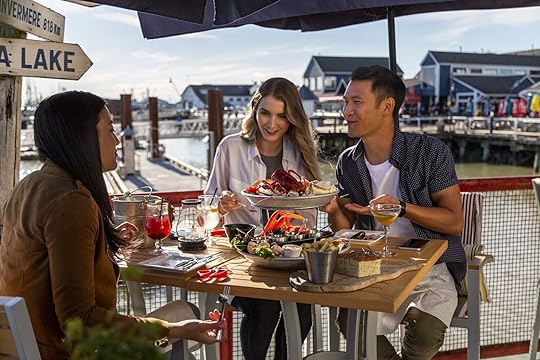
Photo: Tourism Richmond
Steveston Harbour is the heart of British Columbia’s fishing industry, hosting hundreds of commercial fishing vessels. Translation: Restaurants serve fresh seafood year-round, and come spring you can begin to enjoy it outdoors.
Spring also brings the highly anticipated spot prawn season, which typically runs from May to June. When planning your visit, be sure to look into the Steveston Spot Prawn and Seafood Celebration for the most up-to-date details on culinary festivities. During the season, participating restaurants serve exclusive dishes showcasing spot prawns, and chefs take part in cooking demonstrations to share seafood-handling tips. Outside of the season, visitors can still enjoy a bounty of fresh seafood that’s available throughout the spring months, including Dungeness crab, halibut, sablefish, and sea urchin.
To recharge after your outdoor excursions, try a pint of the refreshing and fruity Adrift Blonde Ale, a staple at Britannia Brewing Company. Pair it with unique coastal fare like the oven-baked wild sablefish with truffle cream or the Steveston spaghettini, featuring a medley of sockeye salmon, sablefish, and mussels. To sample the local seafood Japanese-style, head to Ichiro. Grab a bento box to take to Garry Point Park, or dive into steaming bowls of udon topped with crunchy tempura and rice bowls with succulent sashimi.
For the full waterfront experience, Catch Kitchen + Bar serves up pretty views of Steveston’s harbor from its rooftop patio, alongside hearty seafood dishes like shellfish steamed with white wine and Alaskan king crab legs served with rice and vegetables. Nearby Pajo’s Fish & Chips is one of the wharf’s most popular options for a casual seafood meal, especially on sunny days. The restaurant plates up sustainable, Ocean Wise fish and chips — including wild sockeye, cod, and halibut — plus bottomless fries from a floating dock.
But to really get a taste of what Steveston Village is all about, you have to check out Fisherman’s Wharf. This is where local fishing boats dock when they come back from a haul to sell their fresh and frozen catches directly to the public. What better way to connect with your food, right at the source? Fisherman’s Wharf is open 7 days a week, with offerings ranging from salmon to halibut to prawns (and much more!), based on what’s in-season. Check the Steveston Harbour Authority site for details during your visit.
After taking in the sights and scenes, learning about the local history, and indulging in as much seafood as your visit allows, you’ll see why spring is the season to enjoy the best of Steveston Village in Richmond, BC. 
April 19, 2024
This List Ranks Every National Park According to Data
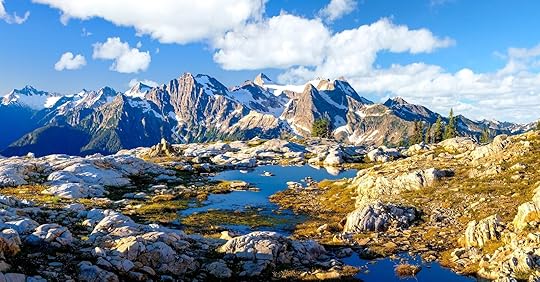
Historian Wallace Stegner famously said that preserving sacred natural spaces as national parks was America’s “best idea.” The second-best idea, then, is to visit those parks. Which to prioritize depends on factors like time of year, your location, and your preferred manner of outdoor recreation. With 63 parks to choose from, narrowing it down to one or two to visit is a process in itself – fortunately, a new data-backed ranking from trip-planning site Travel Lemming breaks down where each park stands based on a variety of factors.
Meg O’Connor, one of the authors of the ranking and a data scientist by trade, broke down the data points and why they’re so important when plotting your journey.
“Most travelers have heard of the major parks, like Grand Canyon and Yosemite,” O’Connor told Matador. “Our list can draw attention to the hidden gems that would require a bit more effort to find.”
Notable metrics and placements on the list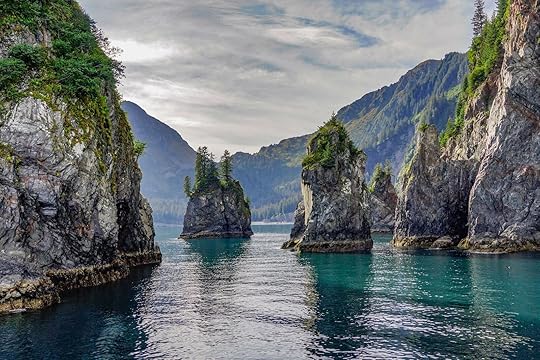
Photo: Penny Richard/Shutterstock
Among those more unknown national parks is Washington’s North Cascades National Park. The park is the 7th least crowded, with just .08 visitors per acre, and offers striking views of many of the most stunning peaks in the Cascades. Amenities are scarcer than at nearby Olympic National Park, but for hiking, backpacking, and deep natural immersion, few national parks out-deliver this one. There are also nearby Airbnb and hotel options near North Cascades National Park for when you need a shower and a bed.
“I think a visitor can have a fantastic experience at both the larger, more ‘iconic’ parks and the smaller ones off the beaten path,” O’Connor says. “Some of the choice will come down to personal preference.”
That makes Grand Canyon National Park, which ranks 6th on the list, an ideal stop both for active recreators who wish to hike down into the canyon and more casual travelers who’d rather post up at the North Rim overlook and marvel at the views. Afterward, head a couple of hours north to Utah’s Capitol Reef National Park, which sees far fewer visitors (5.25 visits per acre) but a similar climate for hiking and marveling at seemingly otherworldly natural rock formations.
Data points included in the ranking include accessibility to a major airport, the average amount spent per visitor, weather, crowds, and visitor reviews. The most unique data point used to rank the national parks is job creation. America’s national parks create tens of thousands of jobs, with Great Smoky Mountains National Park – the most visited in the parks system – linked to 32,600 jobs and Zion National Park linked to 10,800 jobs. Even parks that see fewer visitors due to their remote location can provide ample employment boost for surrounding communities – think Florida’s Dry Tortugas National Park, which is mostly underwater but still supports 58 jobs.
“It was important to us that the list didn’t “penalize” these iconic parks without having a metric that captured their massive influence as cultural institutions and landmarks,” O’Connor says. “In that sense, the jobs metric helps create a proxy for that intangible idea of influence on the local community. It slightly balances out metrics like crowds and average cost per visitor, where less well-known parks often score higher.”
The list shows how the parks fared this year compared to Travel Lemming’s prior rankings, and offers a detailed explanation of what sets each park apart. To quell curiosity, the top-ranked park is Virginia’s Shenandoah National Park, while the bottom-ranked parks tend to be hard-to-reach options that aren’t near a major airport, don’t create a lot of jobs, and cost a good amount of money to get to. These include Alaska’s Gates of the Arctic National Park and Kobuk Valley National Park, among others.
How the national park ranking came together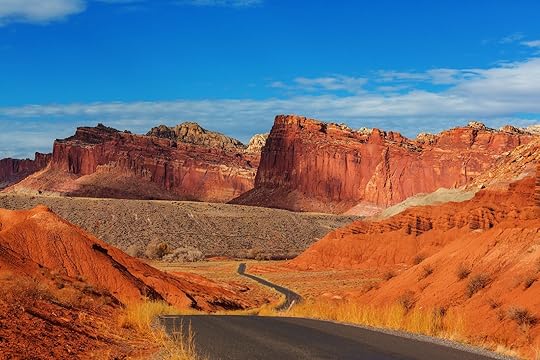
Capitol Reef National Park ranks 21st on the list. Photo: Galyna Andrushko /Shutterstock
Ranking the 63 national parks became a team effort for the Travel Lemming crew, with multiple writers compiling data and putting it into action.
“There were two drivers that helped us decide which data points to use,” O’Connor says. “We wanted variables that would appropriately capture the experience of visiting the park, and we wanted data sets that were complete and would allow us to easily compare across parks.”
Many things considered “favorites” or “iconic destinations” by travelers are often judged subjectively based on individual experiences and perceptions. This makes it difficult to clearly state that one national park is better than another. That’s where the diverse variety of data points came in.
“With data analysis, it’s often important to use a proxy variable that’s easier to access/measure than the phenomenon you’re trying to capture,” says O’Connor. “An example is using the distance from a major airport (a highly specific figure) as a proxy variable to estimate “accessibility,” which is an important but vaguer and more abstract term. To select these proxy variables, we asked ourselves what actually impacts the visitor experience, and how we could capture that numerically.”
One thing the team intentionally left out of rankings was traveler preferences for specific activities, since this would be purely a subjective measurement.
“Since everyone has different preferences in that regard, it would be difficult to use those hobby- or interest-oriented metrics to influence the ratings,” O’Connor says. “Our current rankings do include a biodiversity score that captures the amount of wildlife a nature-lover might encounter.”
Tips for planning a national parks road trip
Mesa Verde National Park tied with Guadalupe Mountains National Park for 52nd on the list. Photo: Sopotnicki /Shutterstock
Aside from the data, O’Connor offers tips to help road trippers plan out a more efficient and enjoyable journey.
“Pick up a U.S. Park Pass ahead of time to cover your entrance fees with a one-time payment,” she says.
This pass covers entrance not only to the 63 national parks but also to more than 2,000 other outdoor recreation sites managed by the US federal government.
Also, O’Connor notes, it’s important to show up prepared for anything.
“Plan for the elements,” she says. “Hiking and camping in many national parks can be a true feat and can include harsh conditions. Make sure you take a realistic approach to what your group will enjoy and put ample effort into researching the right gear and equipment.”
Equally important is crafting an itinerary that doesn’t expand your bandwidth in the first day.
“If you’re going on a longer road trip to see many parks, plan your itinerary so you’ll have some ‘rest parks’ scattered in with the more rigorous and adventurous parks,” O’Connor says. “Maybe you’d enjoy going to a bathhouse at Hot Springs National Park or on a glass bottom boat in Biscayne Bay if your feet start to get blistered from your otherwise-active adventure.” 
Experience The Best of Italy’s High Country at Montana Lodge & Spa

Dust off your salopettes at one of the finest resorts in the Alps where you’ll have your pick of Italian and French pistes – and minimal competition for the ski lifts. Known as “Little Siberia” to the Italians, La Thuile in the Aosta Valley has flown under the radar of international tourists who flock to neighboring Courmayeur. Montana Lodge & Spa is the village’s sole five-star hotel and at 400 meters from the slopes, it’s practically ski-in/ski-out.
Once the snow melts, the green valleys of La Thuile pivot into a hub for hiking, biking, and rafting. Back at base camp, you’ll tend to sore muscles in the Montana Lodge Spa and feast on seasonal Italian fare at the bistro before retreating to your room with a view.
We hope you love the Montana Lodge & Spa! Just so you know, Matador may collect a small commission from the links on this page if you decide to book a stay. Listed prices are accurate as of the time of publication.
Rooms and suites at Montana Lodge & Spa Photo: Booking
Photo: Booking Photo: Booking
Photo: Booking Photo: Booking
Photo: Booking Photo: Booking
Photo: BookingMake yourself at home in one of the 55 rooms and suites at Montana Lodge & Spa, by R Collection Hotels. Accented by traditional Valdostan wood these are loosely styled on traditional chalets and mimic the alpine scenery through snow-white Italian linens and earthy textures. The vast majority have a private balcony overlooking the mountains. All units have a coffee machine and iPod dock plus all the trappings you’d expect from a luxury hotel at any altitude.
Deluxe and grand deluxe rooms accommodate up to three guests and are perfect for couples and smaller families. Push the boat out with a loft room complete with a mezzanine nook. Top-tier suites come furnished with a Hästens bed you’ll want to steal and an open-plan bathroom with a whirlpool tub.
Activities for all seasons in La ThuileSkiing and snowboarding are the main draw for winter guests at Montana Lodge & Spa – but that’s just the start. Freeriding, snowkiting, and heli-skiing are also on the table. As part of the Espace San Bernardo ski area, La Thuile (1,440 meters) and La Rosière (1,850 meters) provide over 99 miles (160 km) of uncrowded slopes.
A complimentary shuttle drops you at the lifts serving Les Suches and Mont Belvedere where you’ll warm up on twisty reds before tackling the 73% gradient Franco Berthod, Italy’s steepest and toughest piste. Federica Brignone made history on this very slope as the first Italian female racer to win the Women’s Ski World Cup in 2020.
Beginner skiers have a reasonable 8 miles (13 km) of blue and green runs although there’s certainly more here for intermediate and advanced skiers. The Aosta Valley is the sole Italian ski region where heli-skiing is permitted. Choppers circle the peaks of Rutor (3,486 meters) and Miravidi (3,051 meters) before dropping you on the French or Italian side of the Alps. Mixed-ability groups and families can sign up for three cross-country loops and guided snowshoeing excursions.
Summer brings an outdoor pursuits bonanza in La Thuile. High-altitude mountain biking trails traverse ancient paths carved by the Romans whereas road cycling tracks follow the route of the Tour de France and the Giro d’Italia. Hikers have over 186 miles of terrain while climbers can ascend Testa del Rutor or the Grand Assaly. The Dora Baltea River offers powerful Grade III and IV rapids from June through August.
Rejuvenate in an alpine spa Photo: Booking
Photo: Booking Photo: Booking
Photo: Booking Photo: Booking
Photo: BookingThe full-service wellness center at this boutique ski resort will see to any aches and sprains – not that you should need an excuse to visit. Erre Spa comprises an indoor heated swimming pool, outdoor hot tub, Finnish sauna, Vitarium, and Turkish bath. Herbal tea and healthy snacks are laid out in the relaxation rooms.
Treatments start at 126 EUR ($136) for a 50-minute massage or ritual. Private spa packages merge ancient and modern practices in a scrub, wrap, and massage combination delivered in exclusive suites. This is priced at 245 EUR ($265) per person.
Italian cuisine in the Aosta Valley Photo: Booking
Photo: Booking Photo: Booking
Photo: Booking Photo: Booking
Photo: BookingRound off a day on the slopes or trails with a signature cocktail or hot toddy at Ottavio’s Lounge Bar. The Montana Mule swaps out vodka for gin while the Bombardino sees mulled brandy garnished with whipped cream and cinnamon. Pizza, club sandwiches, salads, and gelati are served with a view over the mountains.
Restaurant Bistro’ Alpino hits the spot through seasonal menus based on the freshest ingredients sourced regionally. Look out for cured meats served with chestnuts, hearty legume soups, and black truffle tajarin pasta plus an assortment of chops and steaks in winter. Menus are created with all diets in mind including vegetarians, gluten-free diners, and children. Rates include a daily breakfast.
The laid-back restaurants of La Thuile are a 10-minute walk where a hushed après scene keeps you on track for a bright and early start.
Getting thereMontana Lodge & Spa arranges private and shared transfers from Geneva Airport. The closest train station is in Aosta which is accessible from Turin and Milan. Shuttle buses also operate between these cities from early December until the middle of April. 
The 10 Top Rated Bars in Charleston

There’s so much going on with Charleston’s bar scene that you’ll be hard-pressed to accomplish everything in one trip. The city is home to some of the best cocktail bars in the South. The team at Doar Bros., for example, could go head-to-head with the finest bartenders in New York City, and lounges like the Belmont and 1920s-inspired Prohibition offer a sophisticated atmosphere and celebrate carefully chosen local ingredients for elevated classics.
Doug Warner, Executive Vice President at Explore Charleston, shares the best bars in Charleston are built on the back of “well-practiced mixologists,” who are imaginatively reinventing traditional drinks in a manner that “pays homage to the rich tapestry of flavors that define modern southern culture.”
Charleston’s craft beer scene is also flourishing. From established names with regional recognition to up-and-coming artisanal producers, there’s a lot to get excited about. Two breweries ranked in the top ten, with customers praising the taproom’s range of local beers, excellent comfort food, and welcoming laid-back vibe.
With so many great places to drink (and eat), Matador raked through patron’s reviews on Google Maps and Yelp to bring you a list of the top-ranked bars in the city. Ratings (out of five) on both platforms were added together for an aggregate overall rating. And although customer reviews should be taken with a grain of salt, collectively, they offer insight into the overall landscape. To further ensure accuracy, Matador only selected venues with more than 100 reviews.
To help you navigate the city and not miss out on the skills of some of the best bartenders, sommeliers, and brewers in the South, these are the best bars in Charleston, according to reviews.
Traveling to Charleston? Check out Matador’s Charleston accommodations guides:This Hotel Butler Service Makes a Trip To Charleston UnforgettableThe Top Charleston Airbnbs for a Bachelorette Party15 Airbnbs in Charleston to Experience True Southern CharmThe Best Boutique Hotels in Charleston, South Carolina
7 Stylish Hotels in Downtown Charleston for the Ultimate Southern GetawayDoar Bros.
 Photo: Doar Bros.
Photo: Doar Bros. Photo: Doar Bros.
Photo: Doar Bros. Photo: Doar Bros.
Photo: Doar Bros.Rating: 9.8 (4.9 Google Maps, 4.9 Yelp)
Family-run cocktail bar Doar Bros. has one of the most experienced crew of bartenders in town. Despite the small space, the bar and accompanying food menu pack serious heat. Bartender Stephen Blackmon says they have “an unmatched cocktail-focused program,” and that’s evident in the near-perfect score on Google Maps and Yelp.
The elegant European meets New York-style vibe attracts locals and visitors looking for a decent drink. The talent behind the corner bar allows for creativity, or you can sample the well-thought-out modern seasonal cocktail menu or fall back on classics like a Vesper or Hemingway Daiquiri. Pair your tipple with a side of paddlefish caviar and potato chips, whipped ricotta, and beetroot crostini — at a charming outdoor table — and you’ve got a fantastic afternoon set up.
Doar Bros.: 225 Meeting St, Charleston, SC 29401
Bin 152View this post on InstagramA post shared by Bin 152 (@bin152winebar)
Rating: 9.2 (4.7 Google Maps, 4.5 Yelp)
Wine bar, market, and art gallery rolled into one, Bin 152 is where you go in Charleston for a glass of wine. The concept is simple: cozy atmosphere with exceptional wine, charcuterie, and cheese.
Ran by husband and wife duo, the bar’s international list will take you on a trip around the world with Old World French whites and heady Napa Valley cab sauvs. The cheese menu is equally impressive. La Tur, a soft from Piedmont, Italy, sits beside Bijou, a goat’s cheese from Vermont. Bin 152 does not accept reservations. If you want to snag an outdoor table (highly recommended in reviews), get there early or expect a wait.
Bin 152: 152 King St, Charleston, SC 29401
Bar167 Photo: Bar167
Photo: Bar167 Photo: Bar167
Photo: Bar167Rating: 9.2 (4.7 Google Maps, 4.5 Yelp)
Bar167, a Mediterranean-inspired bistro and lounge, occupies the historic building that formerly housed Fulton Five (a well-known northern Italian eatery.) Though originally conceived as an overflow space for the popular seafood restaurant 167 Raw, located around the corner, Bar167 has evolved into a destination in its own right.
Yes, you can come here for an ice-cold gin and tonic before eating next door, but the bar deserves your attention for longer than an aperitif stop. You’ll need more than one chili-salt rimmed Mallorca Margarita, and popular dishes such as the caviar cones with parmesan custard, arroz con negro with house-made aloi, and lobster pasta more than suffice for dinner.
Bar167: 5 Fulton St, Charleston, SC 29401
Belmont Lounge Photo: Belmont Lounge
Photo: Belmont Lounge Photo: Belmont Lounge
Photo: Belmont LoungeRating: 9.1 (4.6 Google Maps, 4.5 Yelp)
If you’re in search of a sophisticated drink in Charleston’s vibrant Upper King district, head to Belmont Lounge. In contrast to the lively energy of the street outside, the Belmont provides an intimate space where you’re guaranteed a well-mixed drink.
Belmont Lounge is considered one of Charleston’s pioneering craft cocktail bars. If you don’t know your Paper Plane from your Naked and Famous, just ask one of the bartenders, and they’ll run you through the classics and signature offerings. It’s a perfect spot for a bachelorette, but be prepared to heal up, as a Yelp reviewer says you’ll find “well-dressed locals” at this sleek establishment.
Belmont Lounge: 511 King St, Charleston, SC 2940
Frothy Beard BrewingView this post on InstagramA post shared by Frothy Beard Brewing Company (@frothybeardbrewing)
Rating: 8.8 (4.4 Google Maps, 4.4 Yelp)
Charleston breweries draw afternoon crowds with comfort food plates or locally owned rotating food trucks and, of course, expertly crafted local beer. One of the better taprooms is the Frothy Beard Brewing Company.
Beloved for its friendly atmosphere, come here if you’re interested in trying something different from the standard mass-produced beers. You can take a tour of the brewery before sampling a flight of mango and passionfruit golden ale, jalapeño pale ale, and a New England-style IPA. Yelp reviewer Bruce F recommends The Sip Sip Pass IPA, which you can get in a six-pack to take home with you.
Frothy Beard Brewing: 1401 Sam Rittenberg Blvd, Charleston
The PeacockView this post on InstagramA post shared by The Peacock (@thepeacockchs)
Rating: 8.7 (4.6 Google Maps, 4.1 Yelp)
The Peacock has multiple levels and a very different vibe (and crowd), depending on whether you’re there for an afternoon meal or a late-night rooftop hang. Peacocks is where you go with a group that appreciates a chic ambiance and is willing to dress up.
The second-floor Peacock Lounge opens at 5:00 PM and has an Instagrammable decor that takes inspiration from the venue’s namesake. V’s, a popular spot for live music, is on the same floor. It has a VIP area, which you can enquire about before arrival. It also has one of the best rooftop bars in Charleston, with stunning cityscape views. Five-star Yelp reviewers rave about the level of service and the efficient management of group bookings.
The Peacock: 404 King St Suite 107, Charleston, SC 29403
Burns Alley TavernView this post on InstagramA post shared by Burns Alley Tavern (@burnsalleytavern)
Rating: 8.7 (4.6 Google Maps, 4.1 Yelp)
Burns Alley Tavern quickly became an institution since opening in 2006. The popular neighborhood bar is tucked away in an alley off King Street. It has a distinct dive bar feel, with exposed brick walls, a well-worn wooden bar, plenty of vintage beer signs, and University of North Carolina memorabilia (a nod to the owner’s roots). The beer is always flowing and you can expect decent live music on weekends. Yelp reviewers comment on the warm welcome they received and the friendly staff and locals who have taken up residence at the bar.
Burns Alley Tavern: 354B King St, Charleston, SC 29401
Holy City Brewing Photo: Holy City Brewing
Photo: Holy City Brewing Photo: Holy City Brewing
Photo: Holy City Brewing Photo: Holy City Brewing
Photo: Holy City BrewingRating: 8.9 (4.5 Google Maps, 4.4 Yelp)
Established in 2011, this award-winning brewery has become a beloved local institution, offering a wide selection of delicious beers and a fun atmosphere.
Located in North Charleston, just a short drive from the historic downtown area, Holy City Brewing has an excellent taproom with a large indoor seating area, an outdoor patio, and a mezzanine level for events. There are 28 beers on the taproom list, ranging from a tropical pilsner to a barrel-aged stout, and there’s always some sort of event going on. A rotating roster of bands plays every Friday and Saturday, and an all-day brunch menu with cocktails is available on Sundays.
Holy City Brewing: 1021 Aragon Ave, North Charleston, SC 29405
Prohibition Photo: Prohibition
Photo: Prohibition Photo: Prohibition
Photo: ProhibitionRating: 8.5 (4.4 Google Maps, 4.1 Yelp)
As the name suggests, Prohibition takes patrons back to the 1920s with vintage-inspired decor, and dim lighting, that creates a speakeasy atmosphere. The cocktail bar, now in its 11th year, is the brainchild of James Walsh and Jim McCourt, who’ve even expanded their concept with a new location in Columbia, South Carolina.
The mastermind behind Prohibition’s inventive cocktail menu is Jim McCourt, the bar director and partner. Be sure to try some of their most popular creations, like the S’Express — a twist on the Espresso Martini featuring house-made espresso vodka, coffee liqueur, cold brew, and a touch of lemon oil. Prohibition also has the largest menu of Irish whiskey in South Carolina. There are three areas to the venue, the main bar (with live music), a small more intimate setting, and the patio — which is where you want to be on a balmy night.
Prohibition: 404 King St Suite 107, Charleston, SC 29403
Camellias Photo: Camellias/Jayro Williams
Photo: Camellias/Jayro Williams Photo: Camellias/Andrew Cebulka and Jason Williams
Photo: Camellias/Andrew Cebulka and Jason Williams Photo: Camellias/Modus Photography
Photo: Camellias/Modus PhotographyRating: 8.5 (4.3 Google Maps, 4.2 Yelp)
Located within the Hotel Bennett, bar/lounge Camellias is known for its decor — inspired by the Russian Faberge’ egg — afternoon tea and Champagne list.
The décor is a bold pink, accented with marble reclaimed from the historic library that once stood on the same spot. The pink theme flows through the drinks menu, too. And although this might seem like a ploy to keep everything aesthetically in check, cocktails such as the Pink Perfection (Titos, St-Germain, citrus, topped with French sparkling rosé) sounds absolutely delicious. Book in advance if you are coming with a group, and consider looking into the afternoon tea experience, especially if you’re planning a classy bachelorette to Charleston. 
Camellias: 404 King St Suite 107, Charleston, SC 29403
More like thisTravelThe 10 Top Rated Brunch Restaurants in CharlestonApril 18, 2024
8 Tips and Tricks You Need to Know Before Driving on the Left Side of the Road
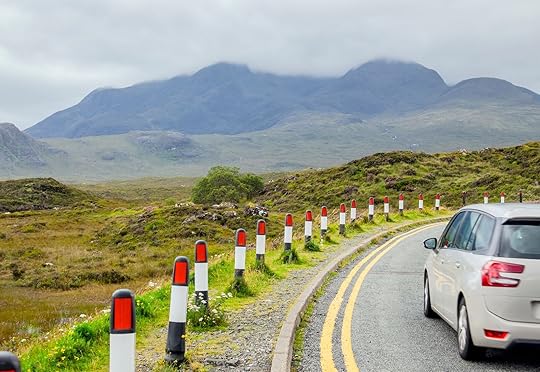
When I was just 22 and lived and worked as a French language teacher in Ireland, my good friend Lars, who taught German and lived in the same small town as I did, died in a car accident. Lars was 24. In an attempt to be more independent and explore the country freely, he had brought his red Toyota Yaris from Germany after the Christmas break just two weeks before. I had traveled with him part of the way from continental Europe, along with another friend of ours, Stephanie, and a friend of his from Germany, Stefan. I remember all of us squeezed in the small two-door car, driving through the night on Ireland’s small, twisty roads. I don’t recall being scared with him behind the wheel, even though I knew he had no experience driving on the left side of the road. About 15 days after our arrival, on January 10, 2007, Lars took his car to take Stefan to the Dublin airport so he could catch his flight back to Germany. They left at 4 AM when the roads were quiet for the 1.5-hour drive. Less that 20 minutes after they departed, Lars forgot he was supposed to drive on the left side of the road and hit a truck coming the other way. He died instantly and his friend was seriously injured. Months after the accident, Stefan, then in his mid-twenties, was still working to re-learn how to speak, read, write, and walk.
Driving on the left side of the road when you’re not used to it is not an easy task. Even if you feel confident about your abilities and have extensive driving experience, it requires serious preparedness and a high level of alertness. Here’s what driving experts have to say about what you should do to be ready and stay safe when driving on the left side of the road.
Rent the right car
Photo: byswat/Shutterstock
Unless you’re bringing a left-hand drive vehicle with you (say, if you’re coming from continental Europe), you’ll have to rent a right-hand drive one on site. If you don’t feel confident shifting gears with your left hand, make sure to rent an automatic vehicle rather than a manual. You’ll be more comfortable and able to focus on the road rather than on the gear-shifting process.
If you can’t rent an automatic vehicle, Amanda Benson, owner of the blog Dusty Trail RV, full-time RVer, and a lifetime traveler, recommends that you “spend some time getting to know the vehicle’s layout before hitting the road. Remember, the gear shift will be on your left. Consider spending at least 30 minutes familiarizing yourself with the vehicle’s controls [pedals, lights, indicators, windshield wipers, etc.] and features before driving.”
Joe Giranda, the Director of Sales & Marketing for CFR Classic, a company specializing in international car shipping and relocation, suggests that you rent a car with a GPS. “GPS devices can be invaluable in helping you navigate unfamiliar territory, reducing the cognitive load of driving and allowing you to focus more on adapting to the new driving environment,” he explains.
Renting a vehicle with cruise control and lane-keep alerts will also allow you to drive at the appropriate speed and stay in your lane. Just make sure you know how to use the those tools prior to setting off.
Ready yourself for the new experienceYou can prepare yourself even before going to the country where you’ll have to drive on the left side of the road. While planning your trip, watch explanatory Youtube videos and ask the car rental agency or your insurance for possible literature they might have on the topic. Take the time to look at how the rules of the road and the signage differ in the country where you’re going prior to your trip. Learning those things on the go will only make you feel overwhelmed and distracted.
Once you have your rental vehicle and have spent a good amount of time familiarizing yourself with all its buttons, control sticks, and other features, you need to carve a couple of hours to practise.
Rose Smith, owner of Winston Express Haulage in Australia, recommends “exercising in a parking lot or on calm suburban streets [to] assist you in acclimating to the demands of heavy traffic.” Blake Shaw, the automotive expert, car enthusiast, and blog author at the All About Wheels blog echoes smith’s advice and explains that “to feel safe, you need to have confidence, which you can gain through practice. Start driving during less busy times of the day and stay away from busy areas until you feel ready.”
If it’s all too much for you but you have time to spare, Noman Kenneth from UK car leasing company LeaseLoco, recommends “reaching out to a driving instructor for a refresher lesson.”
Adjust your mirrorsSmall things can make a world of difference when adapting to driving on the left side of the road, including adjusting your mirror. Beson explains that “properly adjusting your mirrors can help compensate for the changed perspective.” She recommends checking and adjusting mirrors every 15 minutes during the first few hours of driving.
Use visual remindersOne of the most difficult aspects of driving on the opposite side of the road is to remember to stick to the left. Fatigue, distraction, and unfamiliar roads can lead drivers to forget that they should stay on the left-hand side. Giranda explains that “some drivers find it helpful to place a small sticker or note on their dashboard as a continual reminder to stay on the left side of the road.”
Don’t drive aloneBetter than a sticker, a co-pilot will not only keep you awake and alert, but they will remind you to stay on the left side of the road and will take care of everything else while you’re focusing on driving.
Arturo, Travel vlogger at Dashing Elsewhere, explains that “it takes a little time for your spacial awareness to adjust. It’s very easy to hit something with the left side of the car when you’re not used to sitting on the right. A co-pilot will be able to help you gauge distances while you adjust. A co-pilot will also be able to navigate where you need to go, change music in the car, warn you of dangers, etc.”
Avoid the distractions until you feel confidentto stay focused on the task at hand, whether that be sticking to the left, finding your way, managing heavy traffic, driving on unfamiliar roads, or even driving at night, avoid distractions like loud music or podcasts. Sturgeon Christie, CEO of Second Skin Audio which manufactures audio control equipment for cars, recommends “staying away from podcasts on meatier topics, as well as from new music or releases. These are more likely to pull your attention away from the road, and require more thinking and immersion when you really just want to stay in the present.”
Don’t drive when you’re tiredBecause driving on the left side of the road isn’t what you’re used to doing, if you do it in a state of tiredness, you’re more likely to make mistakes, such as veering to the right, which can be potentially disastrous. When you feel like your attention is waning, stop and rest. Note that because driving on the left side of the road requires a lot of cognitive effort, you’ll tire out more quickly so don’t plan hours-long drive without breaks.
Watch out for roundaboutsRoundabouts, while not very common in North America, are just about everywhere in the UK, Ireland, and other countries where people drive on the left side of the road. To eliminate confusion and potential accidents, it is essential that you familiarize yourself with how roundabouts work by learning the answers to the following questions prior to getting behind the wheel of your rental car:
What does the signage for roundabouts look like and what does it mean exactly?Do I come to a full stop at the entry to a roundabout? What lane shall I take for what exit? How and when shall I use my indicator? Do I yield for upcoming traffic when I am driving around a roundabout?Once you understand the mechanics of a roundabout, all you have to remember is that in countries where people drive on the left side of the road, roundabouts operate clockwise.
Which countries drive on the left side of the road?In Europe:
United Kingdom (England, Scotland, Wales, Northern Ireland, as well as island like Guernsey, Jersey, and the Isle of Man)IrelandMaltaCyprusIn the Caribbean:
U.S. Virgin IslandsJamaicaAntigua and BarbudaBahamasBarbadosDominicaGrenadaMontserratSt. Kitts and NevisSt. LuciaSt. Vincent and the GrenadinesTrinidad and TobagoIn South America:
GuyanaSurinameIn Asia:
JapanSingaporeMaldivesThailandIndonesiaMalaysiaHong KongIndiaBangladeshBhutanBruneiEast TimorMacauNepalPakistanSri LankaIn Oceania:
Australia and its territories (Christmas Island, Cocos Islands, and Norfolk Island)New Zealand and its territories (Cook Islands, Niue, and Tokelau)FijiPapua New GuineaSamoa (since 2009 only)TongaKiribatiNauruSolomon IslandsTokelauTuvaluIn Africa
South AfricaKenyaMauritiusBotswanaNamibiaSeychellesEswatiniLesothoMalawiMozambiqueTanzaniaUgandaZambiaZimbabweNote that people also drive on the left in the following inhabited British Overseas Territories: the Falkland Islands (South America), St. Helena (Africa), Ascension Islands (Atlantic), Tristan da Cunha island (Atlantic), Anguilla (Caribbean), Montserrat (Caribbean), Turks and Caicos (Caribbean), Bermuda (Caribbean), Cayman Islands (Carribean), Pitcairn Islands (Oceania), and the British Virgin Islands. 
Enough Already: Stop Calling Everything a ‘Travel Hack’

I love travel hacks. But if social media content has taught me anything, it’s that the average person has no idea what a “hack” actually is. And to paraphrase a popular saying, if we can’t start using the words “travel hack” correctly, then we shouldn’t use them at all.
In recent years, “travel hack” seems to have become a synonym for “travel tip.” And that’s pretty annoying, because a travel hack is a very specific thing.
It’s easy to qualify what counts as a hack as it only needs to meet two criteria. One, you need to be using something in a way it’s not intended to be used. And two, doing so should benefit you more than it would otherwise (usually in the form of saving you time, money, or stress).
Here’s a short list of some of the more egregious, offensive, and eye-rolling uses of the word “hack” I’ve seen lately that made me feel a need to draft this angry op-ed.
The coconut airport security “hack”
View this post on Instagram
A post shared by Paul Saladino, MD (@paulsaladinomd)
Since you can’t carry water through TSA, one man has a genius suggestion: just carry an entire bag full of coconuts onto your plane. Eye roll.
This is one of the worst hacks I’ve ever seen that clearly was posted just to get people to talk about how stupid it is, not to be actually helpful. In this video, a man suggests that instead of carrying an empty water bottle to fill up once you get through security, you literally just toss a few heavy, bulky, and fiber-covered coconuts in your carry-on bag.
Never mind the inconvenience of somehow cutting into a hard-as-rocks coconut mid-flight, or the inconvenience of carrying the extra weight in your bag. Not only is this not a hack — drinking out of a coconut isn’t “hacking” it — but it’s also way, way, way less convenient than just carrying an empty water bottle. This is truly one of the stupidest videos I’ve ever seen on Instagram.
The points “hack”I won’t call the publication out, but I was recently reading an A-list publication and clicked on an article called “How to hack free upgrades using airline points.”
Reader, I regret to inform you that the “hack” didn’t exist. All 1,200 words or more of the article were devoted to how you should join an airline loyalty program to eventually earn enough points and status to get upgraded. Why is this not a travel hack, you ask? Because that is literally exactly what airline loyalty programs are for. Using points for upgrades isn’t “hacking” travel any more than paying for Prime is “hacking” Amazon.
Packing cube “hacks”
Photo: stockfour/Shutterstock
You want to know what a packing cube hack would be? Me too. Because all I know to use packing cubes for is to compress your clothing to make it take up less space in a suitcase. That’s exactly what packing cubes are made for, which means it’s not a hack — but that doesn’t seem to matter to any number of luggage websites or Youtube videos that seem to think using packing cubes is the ultimate travel hack.
I love packing cubes and use them all the time. But they’re not a hack. They’re just a good idea.
Why it matters
Photo: New Africa/Shutterstock
Why does this matter, you ask? Aside from the dumbing down of the internet, getting thousands of people to waste time making and watching videos and blog posts on useless tips that waste everyone’s time, it’s stressful. Suggesting that people should be hacking travel, or hacking productivity, or cooking, or anything else that takes time, just implies that people are “doing it wrong” if they’re not maximizing every opportunity.
It creates a fake promise that if you just watch this video, or just buy this product, or just work a little harder, you’ll be better and happier. It’s the same with every other industry that promises shortcuts or other unrealistic results. They make people feel bad and send the message that you’re not doing it — whatever it is — as well as other people. American culture doesn’t need even more pressure to maximize every second of every day.
Sure, promising hacks to make travel better isn’t as bad as promising health or financial hacks that crush viewers’ self-esteem or risk their financial futures. But it’s along the same lines.
Of course, real travel hacks are out there, and Matador has covered more than a few. (We’re also guilty of being generous with what we call “hacks,” admittedly).
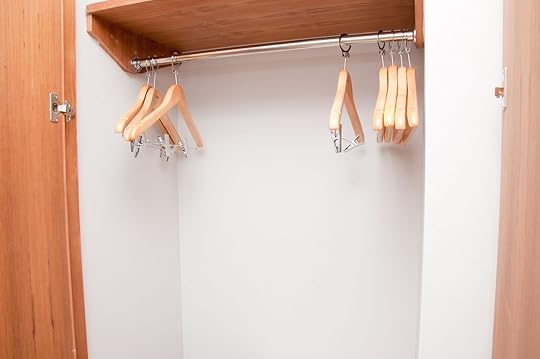
Hangers are key to a popular hack for sleeping better in hotels. Photo: sixninepixels/Shutterstock
This travel hack is one of my favorites for watching videos on a plane when you don’t want to strain your neck by staring down at your phone. Better still, it’s an actual hack, since it’s using an airline sick bag for a very, very different purpose. So too is this post a great travel hack, since pillows aren’t designed to help carry extra clothing. There’s also this thread, advising to use hotel hangers to cinch your curtains and keep the sun from blasting you in the face in hotel rooms.
It’s fine to use the word hack if it’s really a hack. I encourage it, actually. But if people can’t use it correctly, and are just going to start calling anything related to travel a “hack,” then we should stop using it entirely and just call everything a travel tip — or, in the case of the coconut video, just a ridiculous idea. I know I’m guilty of overusing it, especially since putting the word “hack” in a headline is a guaranteed way to get clicks. But I’ve seen the error of my ways, and from this point on, I’m going to be much more judicious with what I refer to as a travel hack. And I’m going to encourage all my fellow writers to do the same.
If you want useful travel hacks that don’t waste your time, consider signing up for Matador’s newsletter; every Wednesday is packed with travel tips. We’ll include any real trending travel hacks, so you don’t have to waste time scrolling on Instagram, plus travel tips for everything from booking cheap flights to finding free tours in nearly every city you visit. 
Matador Network's Blog
- Matador Network's profile
- 6 followers



